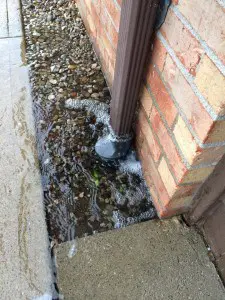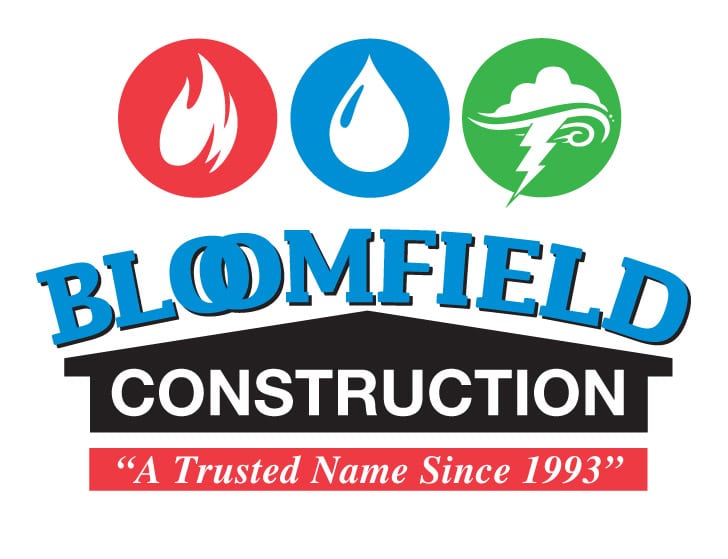 Preventing water damage in your home
Preventing water damage in your home
Water damage is the leading cause of damage to the foundation of homes. Staying aware of identifiable problems can help prevent the need to repair water damage in your home. There are certain areas of your home you should consistently check for water damage signals.
Roof/Attic
Warning signs:
- Missing, broken, loose or curled shingles
- Bowing or dips on the roof
- Moisture, stains or algae in the attic, on ceilings and on interior walls, and
- Broken areas inside and around the fireplace.
Roofs and attics should be inspected every six months. Personally spending a few hours inspecting your roof and performing minor repairs can save you thousands by prolonging the life of your roof and preventing water damage repair costs.
Flashing, a metal strip designed to block out water, can also be used on roofs, around doors, windows, thresholds and chimneys. If you find alarming issues during the self-inspection of your roof, it’s best to contact a professional for assessment.
Windows & Doors
Warning signs:
- Cracks or leaks around windows and doors
- Air drafts
- Loose, cracked or discolored caulk around interior and exterior windows and doors
- Peeling or discoloration of paint and water stains.
Replace any impaired interior and exterior caulk with fresh silicone caulk. As mentioned in the previous section, flashing can also be used around doors and windows. Making repairs to your windows and doors can save money not only by preventing water damage, but also by eliminating air drafts inside your home. This will keep the hot or cold air inside, eliminating higher energy costs. Perhaps the most important benefit of these repairs is the increase in safety. Damaged windows and doors increase the risk of burglary.
Basement
Warning signs:
- Peeling or flaking paint
- Bowing walls
- Odor
- Dampness.
Soil erosion can occur around the foundation of your house, eventually making rainwater flow towards your home rather than away from it. An easy fix to this issue is using backfill to create a slope to direct water away from the house. To do this, first you must raise the ground level surrounding the foundation, preferably with clay soil. Then, cover the clay soil with sod. The slope should be between 4 and 6 inches over a 5-foot span.
 Gutters
Gutters
Warning signs:
- Basement flooding,
- Overflowing gutters during rainfall,
- Water backup around the exterior foundation.
Gutters should be cleaned at least twice per year, once in the spring and once in the fall. Once the blockage is cleared, run a hose from the top of the gutter to check for proper flow and to discover potential cracks and leaks. Also, ensure your downspouts are directing water at least 10 feet away from the foundation. Using PVC pipes in downward sloping trenches below the grass can neatly escort water even further away from the home.
Exterior Walls
Warning signs:
- Cracks or holes, cracking, blistered or peeling paint
- Loose or thinning caulk around windows and doors.
Locations where piping or wiring extend through the exterior should be thoroughly inspected. Any cracks found in these areas, as well as throughout the exterior walls, joints and foundation, need to be filled with sealant. Problem areas should be scraped, patched and painted with high-quality exterior paint. Any areas where siding comes in contact with trim should be sealed with silicone caulk.
 Bathroom
Bathroom
Warning signs:
- Leaking or dripping faucets and handles
- Running toilets
- Moisture inside vanity
- Stains on the ceilings below the bathrooms.
Of all household water usage, 75% is used in the bathrooms. For the bathtub/shower, replace any cracked tiles and make sure there is no missing grout between them. Use the exhaust fan when bathing, as this eliminates moisture and helps keep the bathroom dry. Also, clogged drains prevent the bathtub from drying properly, potentially creating issues underneath the tub. For the plumbing, observe the floor, walls and sounds within the walls. Toilets should be checked for any cracks and replaced upon discovery.
Underlying problems can create mold problems in the ceiling below the bathroom.
Pay close attention to the condition of all caulk around the bathroom, including around the sink, vanity and bathtub, and replace when needed. Be sure to look for cracks and drips below and atop the bathroom sink.
A helpful tip to finding leaks: wrap toilet paper around pipes and look for water soaking through. In addition to these preventative measures reducing the risk of water damage expenses, leaking faucets also rack up a lot of wasted money spent on water bills.
Worried you’re not properly preventing water damage in your home? Concerned about water damage in your home? Contact Bloomfield Construction! We’re here to help you rid your home of water damage.


 Gutters
Gutters Bathroom
Bathroom

